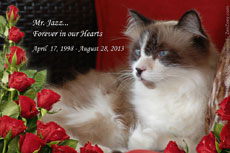Given the media’s propensity towards the clever, chic, hip, and trendy, it is no wonder the story of the numerous charming cat cafes in Tokyo, the reverent worship of the Maneki Neko (a cat sculpture known as the “Beckoning Cat” that is said to bring good fortune to the owner), the infamous “Cat Island,” and cats dressed up in designer outfits is so popular with mainstream social outlets as to how the love affair between the Japanese people and cats are portrayed. Truth be told, it makes great copy and what cat lover wouldn’t want to visit a cat café or an island of cats? Disaster and tragedy, however, is not glamorous and the public can only tolerate the brutal images and reality for so long before they change the channel or turn the page to something lighter and less mentally taxing.

These perennially endearing little Neko sculptures can be found in any number of retail shops in Japan.
That is why the aftermath of the Japanese disasters of last March 11th is such a complex and difficult story to tell – it just does not make sense that so many cats were homeless and abandoned in a nation of such devoted cat loving people. As I continued my interview with Japan Cat Network (JCN) volunteer, Jennifer Koca, the only thing that remained clear, was that nothing was black and white, simple, or easy to understand, especially when it came to this sensitive issue. Read more 
 There is no doubt a lot of serious stuff when it comes to cats – cat overpopulation on the streets and in the shelters is a subject we have been trying to tackle for months now and there is still a long way to go before the problem is solved. But, sometimes we need a break from all that heavy stuff, just to talk about cats being cats…. or what I called in Chapter 22 of my book, “Cattitude & Cattisms.” This chapter was so much fun for me to write, because it is all about the universally wonderful personality traits, habits, quirks, and mannerisms that our cats possess to one degree or another to let us humans know we are NOT in charge. Read more
There is no doubt a lot of serious stuff when it comes to cats – cat overpopulation on the streets and in the shelters is a subject we have been trying to tackle for months now and there is still a long way to go before the problem is solved. But, sometimes we need a break from all that heavy stuff, just to talk about cats being cats…. or what I called in Chapter 22 of my book, “Cattitude & Cattisms.” This chapter was so much fun for me to write, because it is all about the universally wonderful personality traits, habits, quirks, and mannerisms that our cats possess to one degree or another to let us humans know we are NOT in charge. Read more ![]()



























